10 Best Algae Eating Fish For Freshwater Fish Tanks - Swell UK
If you've ever kept an aquarium, then you'll have no doubt come across the archenemy of many fishkeepers, algae. While algae is rarely bad for the health of your aquarium, there are lots varieties – like brown algae, hair algae, and black beard algae – that can quickly turn your underwater world into an unsightly mess.
The best way to get rid of algae naturally is by adding algae eating fish, also known as algae eaters, to your aquarium. There are dozens to choose from, but here's a list of 10 of the best algae eaters for freshwater fish tanks according to our experts here at Swell UK…
1 – Bristlenose Pleco (Ancistrus cirrhosis)
Adult Size: ~15cm
Recommended Aquarium Size: 120 ltrs
Great Against: brown algae, green spot algae, diatoms, biofilm

This algae eater's closely related cousin, the Common Pleco, is renowned for being the best algae eating fish in the hobby, but with adults often reaching giant sizes of 50cm they're only suitable for large, 4ft fish tanks equipped with a powerful external aquarium filter. A Bristlenose Pleco, on the other hand, can be comfortably housed in a medium-sized aquarium, with enough room left over for a bustling community of other nano fish.
Bristlenose Pleco's are named after the large 'bristles' that adorn their suckermouths. These suckermouths are specially designed for devouring algae, particularly soft brown algae and green algae that tends to cover décor, plants and glass. They're also great at hoovering up any leftover food that may have gathered in hard-to-reach corners of your aquarium. They're peaceful too and get along with many small tropical fish, like Tetras, Danios, Rasboras, and Guppies.
In short, they're fantastic algae eating fish and a must-have addition to your aquarium's clean up crew.
2 – Reticulated Hillstream Loach (Sewellia lineolate)
Adult Size: ~6.5cm
Recommended Aquarium Size: 70 ltrs
Great Against: brown algae, green spot algae, diatoms
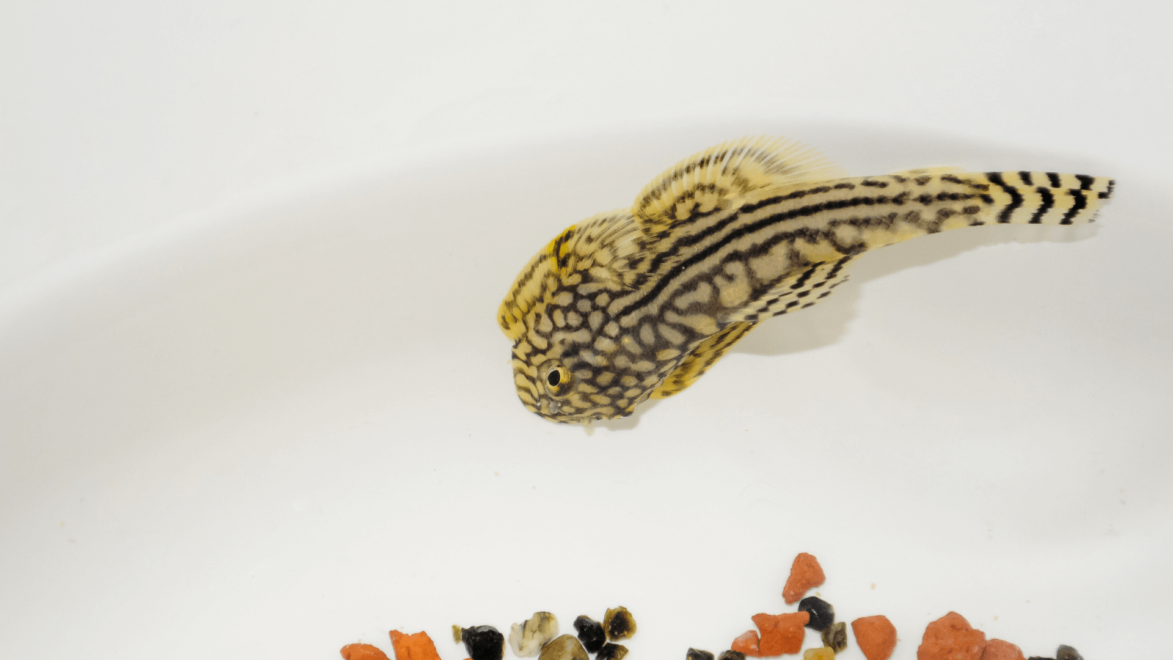
This oddball fish has seen a big increase in popularity in recent years and it's no surprise why – it's a voracious algae eater and it looks just like a mini, freshwater stingray! Their bodies are designed to cling to flat surfaces, making them a perfect choice for getting rid of algae that typically covers large rocks and aquarium glass, like diatoms and green spot algae.
In the wild, Hillstream Loaches inhabit fast-moving, temperate streams. If you're planning to add one, or a handful to your aquarium, then try to simulate these conditions by turning down your heater and adding a wave pump. They can also be quite territorial with others of their own kind, so either get just one loach or a group of four to six loaches to even out this aggression.
There aren't many algae eaters that look cooler than a Hillstream Loach, nor many that are better at removing stubborn algae stuck to smooth rocks and pebbles.
3 – Siamese Algae Eater (Crossocheilus oblongus)
Adult Size: ~15cm
Recommended Aquarium Size: 120 ltrs
Great Against: hair algae, black beard algae, brown algae, green thread algae

This torpedo-shaped algae eater is so good at its job that it has been named after it. At roughly 15cm in length, Siamese Algae Eaters are best suited to large fish tanks, but they can be kept in medium-sized, 3ft fish tanks if stocking levels are kept low. Like Hillstream Loaches, they can be territorial with others of their kind, so add just one to your aquarium or a small group of at least three individuals.
Siamese Algae Eaters have downturned mouths specially designed for eating hair algae, thread algae and black beard algae – the types that grow off surfaces rather than cling to them. They're known for having a bigger appetite for algae when they're younger and not quite big enough to compete with other fish for food. As they grow, however, they'll develop a taste for algae wafers, sinking pellets, and just about any flake food you offer your other fish.
They'll never completely lose their appetite for algae, though, and are reliable algae eating fish throughout their 10-year lifespans.
4 – Chinese Algae Eater (Gyrinocheilus aymonieri)
Adult Size: ~28cm
Recommended Aquarium Size: 250 ltrs
Great Against: brown algae, green spot algae
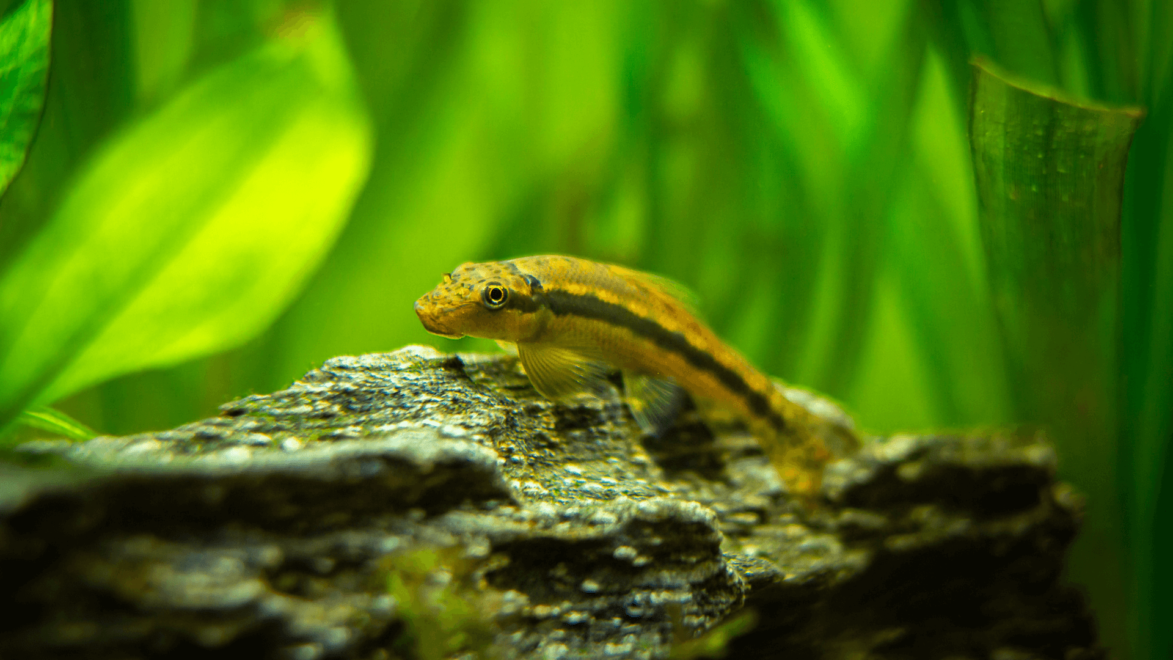
These cleaner fish are often mistaken for Siamese Algae Eaters, but they can grow almost twice as big! This makes them a lot more aggressive and only suitable for 4ft fish tanks and above. That said, you'd struggle to find a better large algae eater than a Chinese Algae Eater which, thanks to its suckermouth, is great at hoovering up massive amounts of algae from the surfaces of plants, rocks, wood and other décor.
To tell the difference between a Chinese Algae Eater and a Siamese Algae Eater, and make sure that you're getting the most suitable cleaner fish for your aquarium, look out for the following signs: a suckermouth, a gold, cream or mottled brown colour, and a shovel-shaped snout with no barbels. These are characteristic traits of a Chinese Algae Eater and the best ways to tell them apart from their smaller, more peaceful cousins.
5 – Oto (Otocinclus vittatus)
Adult Size: ~5cm
Recommended Aquarium Size: 35 ltrs
Great Against: brown algae, green spot algae, diatoms
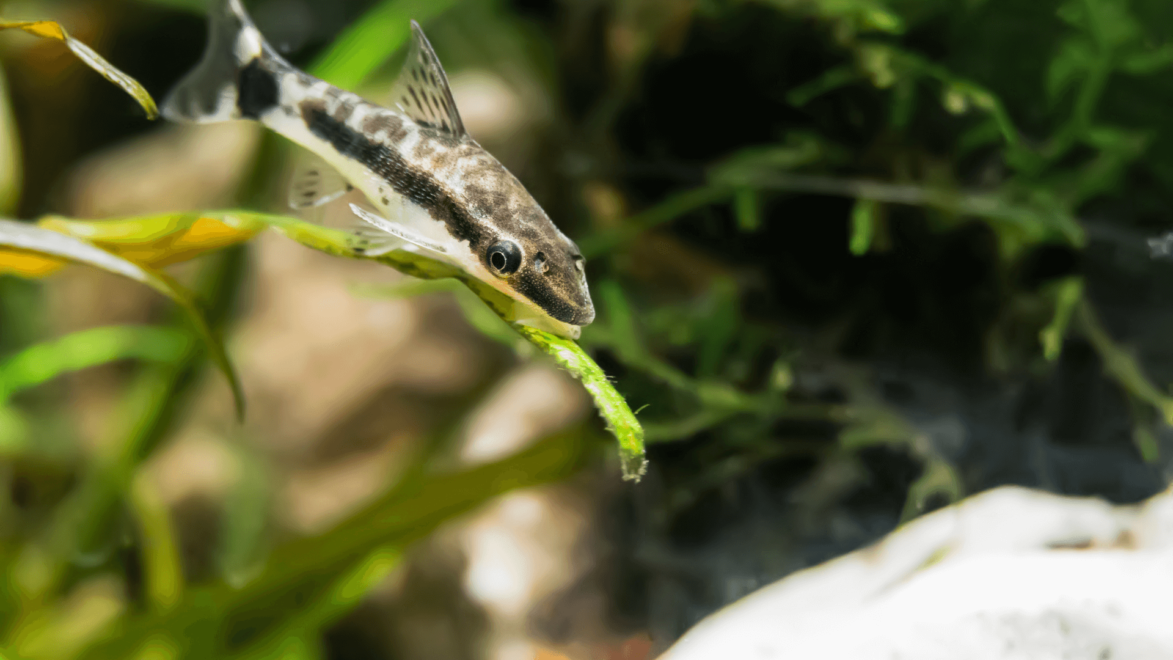
These miniature catfish are named after their genus, Otocinclus, but they're also known as Dwarf Suckermouths by many in the aquarium hobby. They're native to South America where they're found in the Amazon River alongside other popular aquarium fish like Corydoras, Tetras, Discus and Anglefish. Their small size and peaceful temperament makes them fantastic community fish, though they can be a little shy. To help boost their confidence and bring them out of hiding, consider getting a group of five to six.
Otos have a suckermouth like a Bristlenose Pleco, so they're great at removing soft brown algae and green algae from surfaces inside your aquarium. They also have a particular taste for biofilm and love munching on the fuzzy white fungus that commonly grows on aquarium driftwood. While they're great algae eaters, they're prone to being underfed and can get quite skinny if you don't supplement their diet with algae wafers and sinking pellets.
6 – Sailfin Molly (Poecilia latipinna)
Adult Size: ~12cm
Recommended Aquarium Size: 75 ltrs
Great Against: hair algae, black beard algae, green thread algae

These colourful livebearers have been a stalwart of the aquarium hobby for decades, but their strengths as an algae eater haven't been talked about widely until the last few years. Thanks to their flat, grasping jaws and Tardis-like stomachs, they're great at picking off hair algae and thread algae from plants and wood, as well as soft brown algae and green algae from flat surfaces.
Over the years, Mollies have been selectively bred to produce a wide range of colours, fin types and body shapes. The largest, Sailfin Mollies, are perhaps the best algae eaters amongst their diverse family, but Dalmatian Mollies, Common Black Mollies and Balloon Mollies are no slouches and are more than capable of clearing up an algae-infested fish tank.
As peaceful fish, Mollies are welcome additions to many community set-ups. They're not the smallest fish, though, and can grow to sizes of around 12cm. They're livebearers too, so they'll constantly pump out babies that can quickly overcrowd your fish tank. Be prepared for this by providing them with a lot of growing room to start out with.
7 – Flagfish (Jordanella floridae)
Adult Size: ~6cm
Recommended Aquarium Size: 54 ltrs
Great Against: hair algae, black beard algae, blanketweed algae, green thread algae

These nano fish are often hard to find in aquatic shops across the UK, but they make fantastic algae eaters and are well known for their insatiable appetites for hair algae, black beard algae and other fuzzy types of algae that grow off plants, wood and rocks. They're endemic to the US state of Florida where they inhabit shallow, cold water streams full of plants and, you guessed it, algae.
Flagfish are fast swimmers, so they require quite a lot of swimming room. They may be small, with adults maxing out at around 6cm, but they need to be housed in a 2ft fish tank or larger to really thrive. They also do best in unheated, temperate aquariums. That in mind, avoid stocking them alongside algae eating tropical fish like Otos and Siamese Algae Eaters – these fish prefer warmer temperatures.
8 – Panda Garra (Garra flavatra)
Adult Size: ~6cm
Recommended Aquarium Size: 54 ltrs
Great Against: hair algae, black beard algae
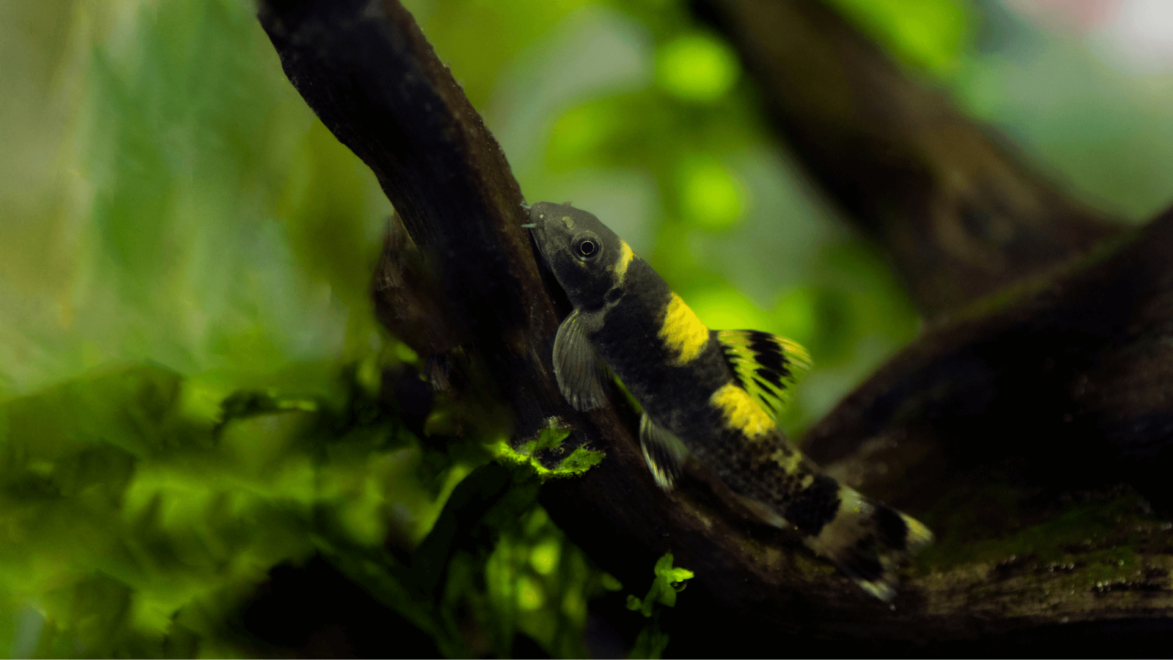
These striped bottom-dwellers, also known as Doctor Fish, are some of the coolest-looking fish in the aquarium hobby. They're also common residents of beauty salons where they're often used to eat the dead skin from customers' feet. It's no surprise then that they make fantastic cleaner fish and algae eaters!
Panda Garras stay small, with adults reaching sizes of just 6cm. They're peaceful too, so they can be kept alongside many other community fish like Tetras, Danios, Rasboras, Guppies and Mollies. Unlike many other nano fish they're not a schooling fish and are more than happy living on their own. Add one to your community set-up and watch as it buzzes around, devouring stubborn algae and biofilm from plants, rocks and wood.
9 – Rosy Barb (Pethia conchonius)
Adult Size: ~12cm
Recommended Aquarium Size: 75 ltrs
Great Against: hair algae, black beard algae, green thread algae
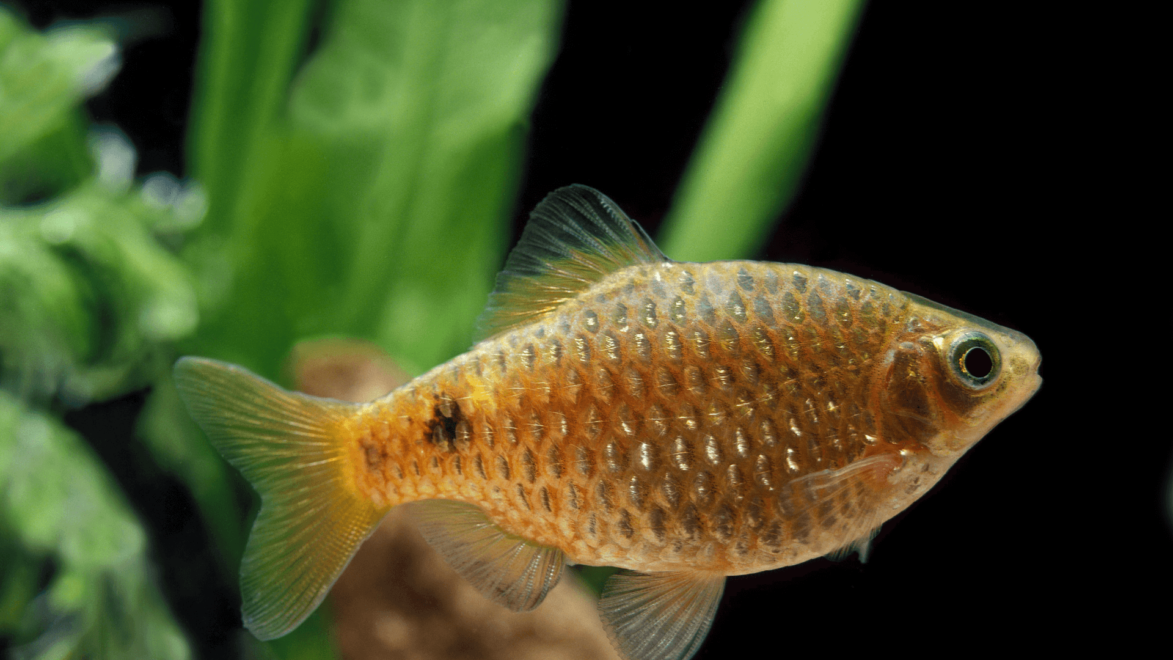
Like Sailfin Mollies, Rosy Barbs aren't best known for their algae-eating abilities, rather their colourful, glittery scales. Nevertheless, they're one of the best cold water algae eaters available in the aquarium hobby and have a particular taste for fuzzy algae like hair algae and thread algae, using their small, pointed mouths to quickly pick clean overgrown surfaces.
Rosy Barbs don't grow particularly large and they're widely regarded as a peaceful species. That said, they are fast swimmers and don't mix well with slow-moving species like Gouramis, Bettas, Discus and Angelfish. They also thrive best in cold water aquariums – another reason why you wouldn't typically keep them with these tropical fish.
10 – Amano Shrimp (Caridina typus)
Adult Size: ~5cm
Recommended Aquarium Size: 35 ltrs
Great Against: most types of algae

Yes, Amano Shrimps aren't fish, but we couldn't finish this list without mentioning the most popular algae eater of them all. These freshwater shrimps are tireless workers, spending their entire days – and often nights – grazing on algae in your aquarium. They're not fussy either and are known to eat anything from soft brown algae and green algae to stubborn forms like black beard algae. They'll also chow down on leftover fish food that their tankmates have left to rot at the bottom of your aquarium.
Amano Shrimp are classed as a dwarf shrimp, though it's not uncommon to see adults reach sizes of 6cm. Their smaller cousins, Cherry Shrimp, are fantastic algae eaters too and regularly breed in a freshwater fish tank. Both Amano Shrimps and Cherry Shrimps are peaceful aquarium inhabitants and can be kept together to form an effective and efficient clean up crew. Just avoid adding them to aquariums with large fish as they'll quickly become expensive snacks!
Can algae eaters survive on a diet of just algae?
Like all aquarium inhabitants, algae eaters need a balanced diet to live long and healthy lives. Yes, algae will keep their bellies full and provide them with some nutrition, but it won't give them everything they need. To keep your algae eating fish and invertebrates healthy, make sure you regularly feed them specialised foods like algae wafers, sinking pellets and tablets.
How else can I get rid of algae?
Adding algae eaters to your aquarium is just one of several ways to get rid of algae. Other easy ways to keep algae at bay include adjusting your lighting levels, feeding less, performing more water changes, and regularly cleaning your filter. For those of you who have aquariums overrun by algae, or murky green water, then you may need to bring in the big-guns and use an algae treatment or a UV steriliser.
Comments
Post a Comment